In the middle of the 19th century, the rise of the railway led to the development of a revolution in travel across Europe.
In this great upheaval of an industrious and innovative century, an idea was to germinate and make its way into the mind of the Belgian engineer Georges Nagelmackers (1845-1905):connecting Paris and Constantinople. This trip, from its time devoted to a bourgeois class and rejected at first sight by cautious investors, has found a luxury route, a name, a brand:the Orient Express. What adventures and annoyances for a concept in its time considered extravagant. Even today, the attraction exudes a scent of exoticism which was completely assumed by the conductor from Liège.
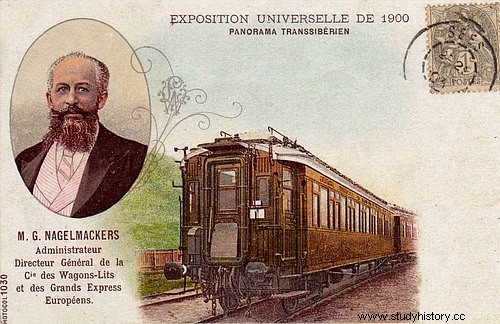
The very first excursion took place on June 5, 1883; the official inauguration of the train, meanwhile, will take place on October 4 of the same year. For its inaugural departure, the train of this romantic enterprise stood ready at Strasbourg station, now Gare de l'Est, in Paris. However, the twenty-four passengers are skeptical because, three months earlier, Georges Nagelmackers, then thirty-eight years old, had canceled the first trip at the last moment. This is why many bet against the success of this journey, especially since the stakes were high.
At the dawn of the consecration, an uncertainty still looms on the horizon:Georges Nagelmackers cannot be certain that all the partners will respect their arrangements. Indeed, the agreement with the Orient-Express required no less than ten different contracts. Indeed, to achieve his goal, the Belgian entrepreneur had to sign a contract with a myriad of key players in this project:the Compagnie des chemins de fer de l'Est – nationalized on January 1, 1938 (the one of the six great French railway companies), the Chemin de fer du Reich d'Alsace-Lorraine, the Société royale grand-ducale des chemins de fer Guillaume-Luxembourg, and, among others, the agreement of the royal family from Württemberg. The non-exhaustive list could have included the Bavarians, the Austro-Hungarians, and further still the Romanians. The task seemed Herculean.
Obviously, crossing all these countries, coordinating and finding in fine a consensus was a tour de force. A venture of this magnitude with so many prominent partners had never been done before, although the complications, meanwhile, were only just beginning.
The legal bodies of the regions – which the Orient-Express had to pass through – were not the only problem; so were the rails. Literally. The railway systems at the time were a real patchwork. Everywhere there were different safety systems, clearance profiles and sometimes also track gauges. It is remarkably remarkable that a Belgian entrepreneur attempted such an uncertain move into the complicated Middle East through all these rival powers.
The way in which Georges Nagelmackers negotiated his contracts more or less still forms the basis of negotiations between railway administrations in international traffic. The great thing about these contracts is that it describes exactly the weight of the train on the tracks, what the cars were supposed to look like, or the food orders; everything, from start to finish, was strategically planned.
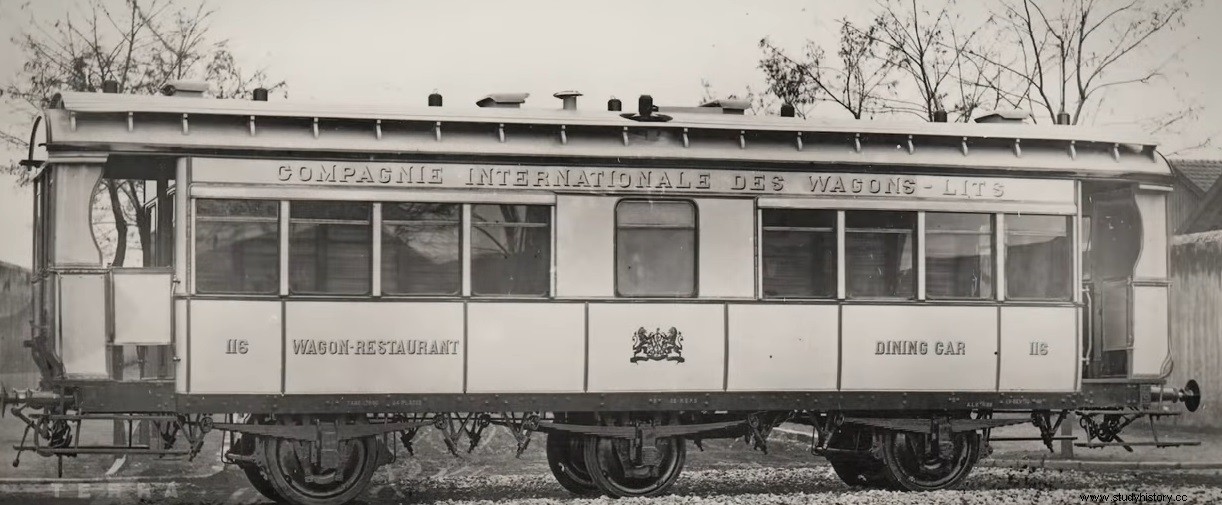
Back to source
Then barely 25 years old, the young entrepreneur negotiated with Belgian, German and French banks. He tried to convince with his idea of a European network of sleeping cars. Unfortunately, there were conflicting opinions:like a number of bankers, most of these intermediaries considered his plan far too risky. The investments to be injected were, so to speak, enormous. The banks therefore declined.
Against all odds, Georges Nagelmackers succeeded in convincing the Belgian King Leopold II to intercede as a shareholder, even though the regent never paid for his shares. However, his recommendations made it easier for the young entrepreneur to conclude contracts with the railway administrations. And so to speak put his dream on track.
For this, he published a brochure entitled:“Project for the installation of sleeping cars on the railways of the continent”. However, it was in the United States that he discovered “Sleeping cars”. So he came up with the idea of improving the comfort of night trains, by proposing to install restaurant cars and transform traditional benches into berths.
In America, traveling was in fact an ordeal, the constraints numerous, the itinerary dangerous. Georges Nagelmackers wanted to do better within the old Continent. At less than 30 years old, he wrote a “business plan” in his hometown, Liège. He wanted to build a new type of sleeping car according to his wishes, and make the Orient-Express a stage to tie other railway companies to his project.
With his concept of sleeping cars/cars-lits, his ideas finally saw the light of day for the first time on the Ostend-Cologne route. Then Ostend-Berlin. And finally Paris-Vienna.
But only small two-axle wagons existed until then. They only offered space for six passengers, and the seats could be unfolded independently. Much too uncomfortable for Georges Nagelmackers. In 1872, therefore, he decided to spend his last reserves on more comfortable sleeping cars, thus placing a large order with the Austrian wagon factory in Simmering.
The day is therefore a milestone:the newly imagined sleeping car sets standards. The interaction of wheels and axles is a key requirement for smooth operation and optimum comfort. He had paid a lot of attention to detail. It starts with beds that you can place in different positions, as well as hangers that have rubber knobs so they don't bang on the wall unexpectedly during the night, with separate rooms for smokers and non-smokers. smokers. But the convenience of travel included more in 1883:the toilets were designed to make the traveler as comfortable as possible, which would cause real queues. And after each visit to the toilet, a servant came for the proper cleaning.
After the construction of the first sleeping cars, the visionary had a new idea:the preparation of food on board should finally become more professional. For this purpose, he had a kitchen installed. He then developed the rolling restaurant for the first trip in 1883. The logistics in the kitchen were of course very complex, not least because space was very limited there. In other words, all workers had to know what they were doing and how they coordinated with each other in terms of movement, like a tango. The hob was wood and coal. The stove, with three burners, was called the piano , and the boss himself celebrated the meals on this piano. Always with a view to perfection, he tried to have the best cooks. Only the best people were allowed to work there. Fresh vegetables, Bordeaux wine, selected fruits, Georges Nagelmackers offers menus adapted to the country of transit. Ingredients were loaded at each station. These meals were so tasty that guests often had a table reserved just for dinner.
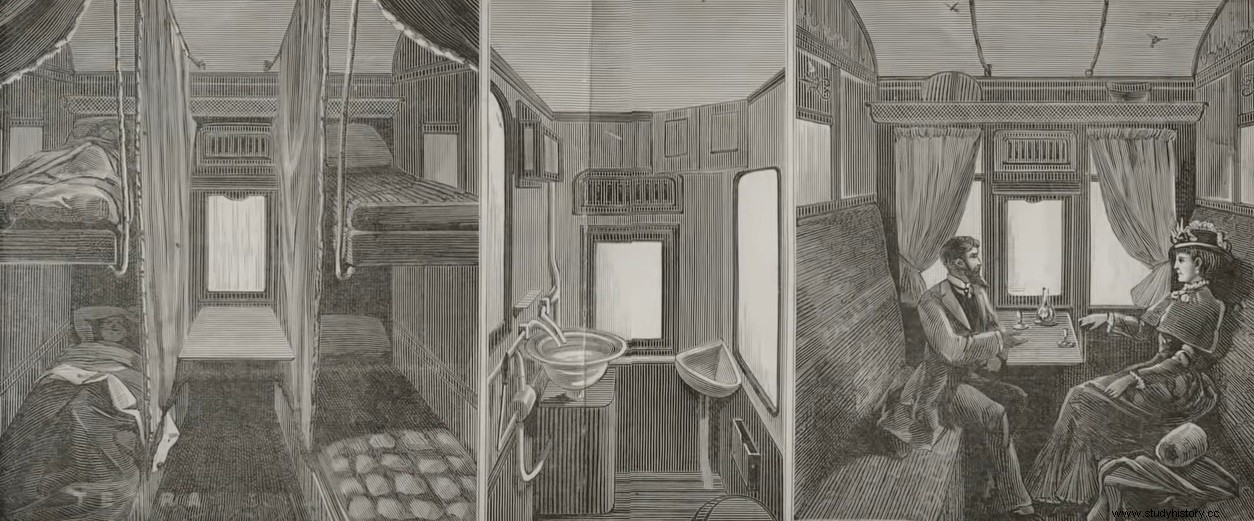
Tourism &exoticism
He also had an undeniable marketing talent:with sophisticated posters, he managed to draw attention to his company. The poster itself was of course the advertising medium par excellence. It was thus the largest elements of color in the public space. There were very elaborate posters with lots of information that projected wanderlust.
The Belgian entrepreneur is perhaps also the inventor of tourist event programs, because he welcomed, among others, dervishes and fakirs to entertain his guests. The passengers of the Orient Express were thus impressed by the dancers and their choreographic performances, unheard of for a clientele adept at novelties of all kinds. Thanks to these posters, the idyllic glimpse of what it looks like in Turkey, or Spain, was right on target to maintain the idea of a destination of desire and romance.
That said, despite great efforts, Georges Nagelmackers was unable to direct the first train directly to Constantinople. In the last section, passengers had to take a relay train, and on the shore of the Black Sea a ship.
Six years later, in the summer of 1889, the Orient Express traveled directly to Constantinople at Sirkeci station. George Nagelmackers wanted to transport people around the world as comfortably as possible. He achieved the most difficult goal:a real connection between West and East.
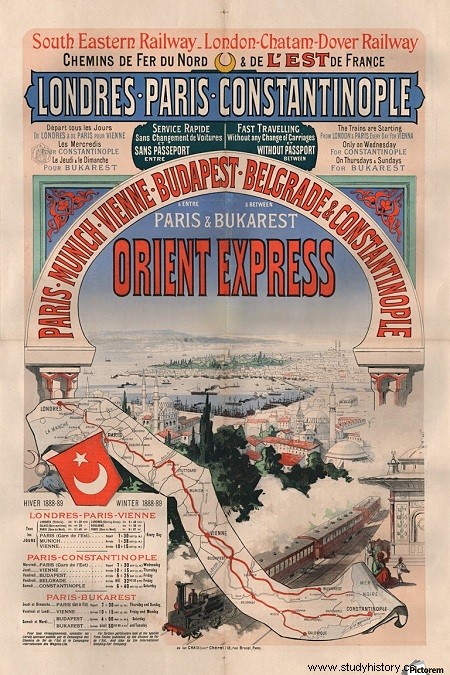
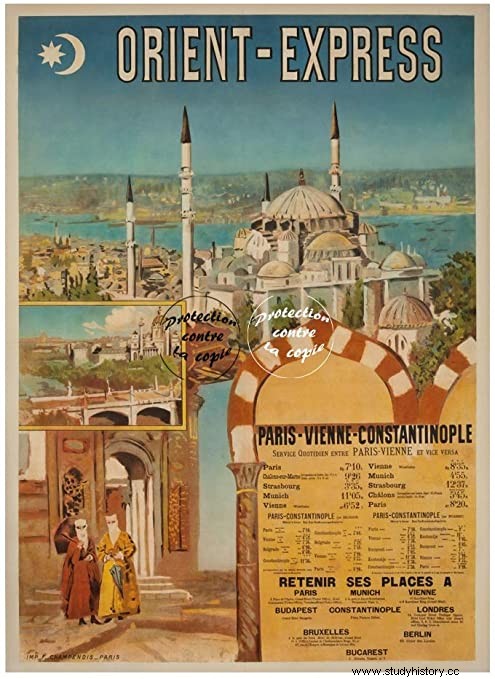
Find out more:
Orient Express:From History to Legend (Albin Michel)
The Orient-Express:a century of railway adventures, by Jean des Cars and Jean-Paul Caracalla (Denoël)